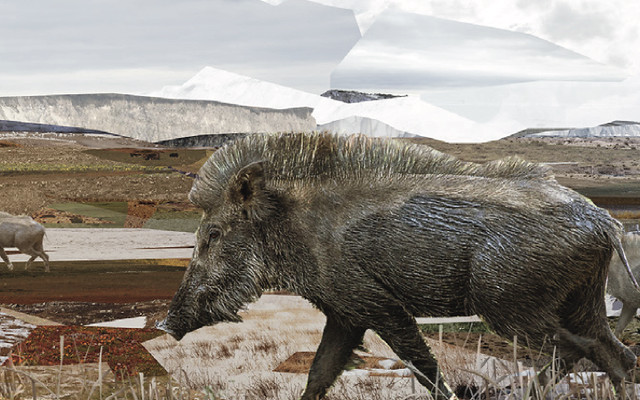Platygonus compressus, the flat-headed peccary, is an extinct mammal species from the Tayassuidae-family, that lived in North-America during the Pleistocene. It was first described in 1848 by John L. Leconte. At the end of the Pleistocene it disappeared.[1]
The flat-headed peccary was about 75 cm (29.5 in) in shoulderheight and about 30 kg (66.1 lb) in weight.[2] Other sources have estimated it to be similar in size to the European Wild Boar.[3] Sizes differ between the place they have been found.[4]
Fossil skulls suggest a small brain, but a good sense of smell and seight. It has been suggested that the nasal cavity provided filtration for cold, dry and dusty air.[5][6]Platygonus compressus had elongated limbs, a short humerus, broad and erect thoracic vertebrae and a large scapula. Therefore it has been suggested that this species may have been fleeter on foot that modern peccary species.[3] Otherwise they probably appeared very similar to their closest living relative, the Chacoan peccary.
(From Wikipedia, June 2018)




